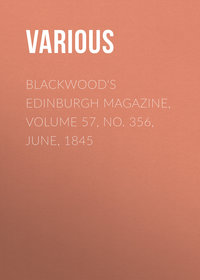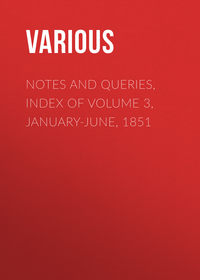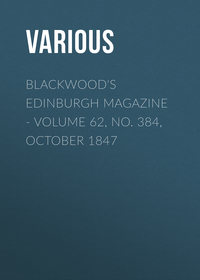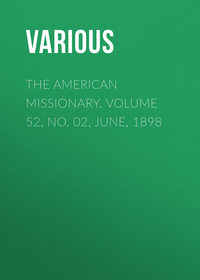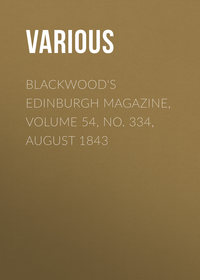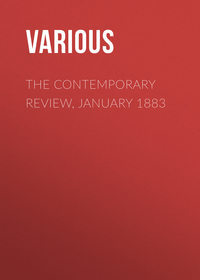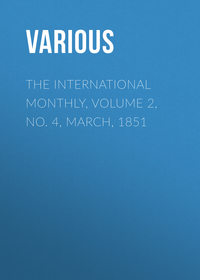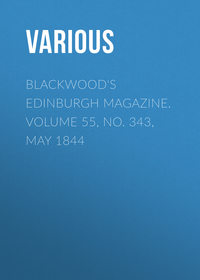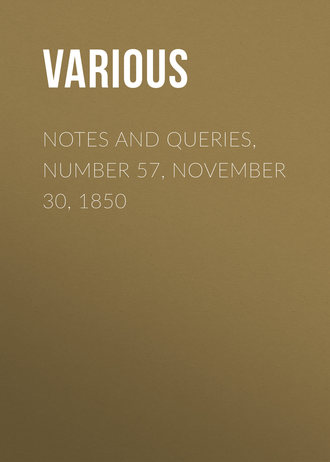 полная версия
полная версияNotes and Queries, Number 57, November 30, 1850
In Malcolm's Anecdotes of the Manners and Customs of London during the eighteenth Century, 4to. 1808, there is a
"Summary of the Trial of Donald Maclane, on Tuesday last, at Guildford Assizes, for the murder of William Allen Jun. on the 10th of May last in St. George's Fields."
Upon the trial mention was made of the paper stuck up against the walls of the King's Bench Prison, from which it appears that it contained the following:
"Let * * * Judges, Ministers combine,And here great Wilkes and Liberty confine.Yet in each English heart secure their fame isIn spite of crowded levies at St. J–'s.Then while in prison Envy dooms their stay,Here grateful Britons daily homage pay."The inscription upon the tomb of William Allen was visible in 1817, and in addition to the inscription on the north side, which has already been printed in "NOTES AND QUERIES" (Vol. ii., p. 333), was as follows:—
South Side"O disembody'd soul! most rudely drivenFrom this low orb (our sinful seat) to Heaven,While filial piety can please the ear,Thy name will still occur for ever dear:This very spot now humaniz'd shall craveFrom all a tear of pity on thy grave.O flow'r of flow'rs! which we shall see no more,No kind returning Spring can thee restore,Thy loss thy hapless countrymen deplore.East Side"O earth! cover not thou my blood."—Job. xvi. 18.West Side"Take away the wicked from before the King, and His throne shall be established in righteousness."—Prov. xxiii. 5.
Fifteen months afterwards the father of William Allen presented a petition to his majesty for vengeance on the murderers of his son.
O. SMITH.Replies to Minor Queries
Osnaburg Bishopric (Vol. ii. p. 358.).—By the treaty of Osnaburg, in 1624, it was stipulated "that the alternate nomination to the Bishopric of Osnaburg should be in the catholic bishops, and in the protestant branches of the house of Luneburg." Thus, the Princes Ernest Augustus, the father of George I., Ernest Augustus, brother of the same monarch, and the late Duke of York, became sovereign-bishops of Osnaburg. But by the treaty of Vienna, in 1815, the bishopric became an integral part of the kingdom of Hanover. (Vide Halliday's House of Guelph, 4to. 1820, pp. 134, 135, 335.)
F.E.Death of Richard II. (Vol. ii., p. 391.).—Otterburn tells us (pp. 228, 229.) that Richard II.'s death took place at Pontefract Castle, on St. Valentine's day, and adds, that the body was exposed to public view in all the principal towns through which it passed on the road to London. See also Walsingham (p. 363.):
"Clausitque diem extremum apud castrum de Pontefracto, die Sancti Valentini."
The Keeper of the Wardrobe, moreover, received 100 marks for the conveyance of the king's body from Pontefract to London. (Issue Rolls, 1 Henry IV.)
It was the belief of many contemporaries—and arguments have been adduced by modern writers in support of the supposition—(see a very interesting treatise on the subject in the second volume of Tytler's History of Scotland), that Richard II. escaped from his prison, and lived for several years in Stirling Castle. But be that as it may, Froissart, I think, is clearly wrong in stating that he died in the Tower of London.
O.P.Q.In answer to your Query relative to the death of Richard II., and his dying at Pontefract, I beg to refer you to Devon's printed Pell Records, Hen. III. to Hen. VI., p. 275, for the following entry:
"17 February. To Thos. Tuttabury, clerk, keeper of the king's wardrobe, In money paid to him by the hands of Wm. Pampleon, Esq., for expenses incurred for the carriage of the body of Richard, late king of England, from the town of Pomferait to London, by Writ, &c., 66l. 13s. 4d."
Again, at page 276.:
"To a certain other valet, sent from London, by direction of the king's council, to Pontfreyt Castle for the protection and safe custody of the body of Richard II., late king of England, In money paid to his own hands for his wages and expenses, 6s. 8d."
This seems to be decisive of the question; but there are several other interesting entries bearing on the same point.
D.P.R.Scottish Prisoners sold to Plantations (Vol. ii., pp. 297. 350. 379.).—
"The judgements of heaven were never so visible upon any people as those which have fallen upon the Scots since [the sale of Charles I.]; for, besides the sweeping furious plague that reigned in Edinburgh, and the incredible number of witches which have increased, and have been executed there since; besides the sundry shameful defeats they have received by the English, who carried away more of them prisoners than they were themselves in number; besides that many of them died of mere hunger; besides that they were sold away slaves, at half a crown a dozen, for foreign plantations among savages; I say besides all this chain of judgements, with diverse others, they have quite lost their reputation among all mankind; some jeer them, some hate them, and none pity them."—Howell's German Dict., p. 65., 1653.
Echard, in Hist. Eng., vol. ii. p. 727., speaking of the prisoners taken at Worcester, says that Cromwell
"marched up triumphantly to London, driving four or five thousand prisoners like sheep before him; making presents of them, as occasion offered, as of so many slaves, and selling the rest for that purpose into the English plantations abroad."
W. DN.Lachrymatories.—There is absolutely no authority in any ancient author for this name, and the best scholars speak of these vessels as the bottles usually called lachrymatories, &c. It would be curious to discover when the name was first used, and by whom first this absurd use was imagined. It [illegible] that their proper use was to contain perfumes, scents, and unguents, as sweet odours to rest with the departed. Becker says:
"Bottles, filled with perfumes, were placed inside the tomb, which was besprinkled odoribus. These are the tear-flasks, or lachrymatories, so often mentioned formerly."—Gallus, p. 413. Eng. Tr.
A wasteful use of perfumes at funerals (sumptuosa respersio, Cicero de Legibus, ii. 23.) was forbidden by the Twelve Tables. The eighth verse of the fifty-sixth Psalm,
"My flight thou numberest: put my tears in thy bottle: stand they not in thy book?"—Hengstenberg, Clarke's Tr. Edinb.
is, I believe, the only evidence that can be brought in favour of the old opinion; but we surely cannot take the highly figurative language of Eastern poetry to establish a Roman custom of which we have no hint elsewhere. This verse admits of a much simpler interpretation; see Arndt, quoted by Hengstenberg ad locum. From a review of Museum Disneianum, which appeared in No. XXIII. of the Classical Museum, it seems that Mr. Disney has devoted to this subject some pages of the introduction to Part II. of the above work, of which a summary is given by the reviewer.
ED. S. JACKSON.Torreridge, Herts, Oct. 23.Querela Cantabrigiensis (Vol. ii., pp. 168. 205.).—MR. SANSOM is sustained by Anthony Wood in assigning the Querela to Dean Ryves; but it may be doubted whether he were anything but the editor, publishing it as an Appendix to the Mercurius Rusticus. The title of the work is Querela Cantabrigiensis: or A Remonstrance by way of Apologie for the banished Members of the late flourishing University of Cambridge, by some of the said Sufferers. Now Dean Ryves was a member of the University of Oxford. In Wood's Fasti, it is stated that he took the degree of B.A., Oct. 26, 1616, being then of New College. On June 9, 1619, he was admitted of Magdalen College, as a member of which he took his B.D. in 1632, and proceeded to D.D. in 1639. He had nothing therefore to do with the sufferings of the members of the University of Cambridge. In the Life of Dr. Barwick, the account given of the Querela Cantabrigiensis is:—
"But Mr. Barwick's no inconsiderable part of this tragedy, together with others of the university, groaning under the same yoke of tyranny, and each taking a particular account of the sufferings of his own college, gave a distinct narrative of all these barbarities, and under the title of Querela Cantabrigiensis, or the University of Cambridge's Complaint, got it printed by the care of Mr. Richard Royston, a bookseller of London, who did great service to his king and country, by printing and disposing, in the most difficult times, books written in defence of the royal cause." pp. 32-33.
In the Appendix (p.495. note), Dr. Bruno Ryves is mentioned, and spoken of as the author of Mercurius Rusticus; but no notice is taken of his being one of the authors of the Querela. Of Dr. Ryves, who assisted in the Polyglot, a good account is given in Todd's Life of Bishop Walton, vol. i. pp. 306-309.
Barwick was upon another occasion assisted in a work against the League and Covenant, published in 1644, by William Lacy of St. John's, Isaac Barrow of Peter-House, Sethward of Sidney College, Edmund Baldero, and William Quarles of Pembroke Hall, and Peter Gunning of Clare Hall. It is not an improbable conjecture that some of these distinguished men assisted in the composition of the Querela.
A.B.R.Easton."Then" for "than."—At the end of Selden's Titles of Honour (edit. 1631), after the list of "Faults escapled in print," occur the words, "may with no less difficulty be amended then observed?" Was the word then commonly used in the sense of than; or is it a misprint?
P.H.F.[Dr Latham, in English Language, p. 377. (3d ed.), observes. "As to the word than, the conjunction of comparison, it is a variety of then; the notions of order, sequence, and comparison, being allied. This is good; then (or next in order) that is good, is an expression sufficiently similar to this is better than that to have given rise to it."]
Doctrine of the Immaculate Conception (Vol. ii., p. 407.).—"The Papal decision" referred to may probably be found in the Popes Letters of 2nd Feb. 1849, and of 20th May, 1850. The former professes to seek for information on this question from the priests and bishops of the whole Catholic world, but at the same time it enunciates clearly the Pope's opinion in favour of the doctrine.
J.H.M.Bath.In the Catholic Annual Register for the Year ended 30th June, 1850, published by Dolman, will be found the recent Allocution of his Holiness Pius IX., a Pastoral of the Cardinal Wiseman, and one from the bishops of America on this subject; from which your correspondent L. will be fully able to discover the present state of the doctrine of the Catholic Church on this mystery.
FESTE.Letters of Horning (Vol. ii., p. 393.).—Letters of Horning, in the law of Scotland, are writs issuing under the signet of the sovereign (used in the Supreme Court, or Court of Session, for signifying the sovereign's assent to writs issuing from that court) obtained by creditors, commanding messengers at arms
"To charge the debtor to pay or perform his obligation within a day certain." … "If payment be not made within the days mentioned in the horning, the messsenger, after proclaiming three oyesses at the marketcross of the head borough of the debtor's domicil, and reading the letters there, blows three blasts with a horn, by which the debtor is understood to be proclaimed rebel to the king for contempt of his authority."
§ 26. "Denunciation, if registered within fifteen days, either in the sheriff's books or in the general register, drew after it the rebel's single cheat, i.e. forfeiture of his moveables to the crown. So severe a penalty, with the character of rebel affixed to denunciation on civil debts, was probably owing to this; that anciently letters of horning were not granted but to enforce the performance of facts within one's own power, and when afterwards [in 1584] they came to be issued on liquid debts, the legislature neglected to soften the penalty. Insomuch that those who were denounced rebels, even for a civil cause, might be put to death with impunity till 1612. Persons denounced rebels have not a persona standi ne judicio. They can neither sue nor defend in any action."
I have preferred, to any explanation of my own, to make the preceding extracts from Erskine's Principles of the law of Scotland, Book ii., Title 5., Sections 24, 25, 26.,—a standard institutional work of the highest authority.
For those who are disinclined to examine the subject too gravely, I must refer to another authority equally worthy of credit, viz. Sir Walter Scott's Antiquary, where, in Chapter xviii.,
"Full of wise saws and modern instances."
the subject of imprisonment for debt in Scotland is discussed most ably by Jonathan Oldbuck, Esq., of Monkbarns, who proves to his nephew, Captain McIntyre, that in that happy country no man can be legally imprisoned for debt. He says,—
"You suppose now a man's committed to prison because he cannot pay his debts? Quite otherwise; the truth is, the king is so good as to interfere at the request of the creditor, and to send the debtor his royal command to do him justice within a certain time; fifteen days, or six, as the case may be. Well, the man resists, and disobeys; what follows? Why, that he be lawfully and rightfully declared a rebel to our gracious sovereign, whose command he has disobeyed, and that by three blasts of a horn, at the market-place of Edinburgh, the metropolis of Scotland. And he is then legally imprisoned, not on account of any civil debt, but because of his ungrateful contempt of the royal mandate."
I have only quoted what was absolutely necessary to answer the Query; but there is much more to be found on the subject in the same place.
I cannot suppose that there is any one of your readers so illiterate as not to have read the Antiquary, there are few memories which are not the better for being from time to time refreshed. My own is not of the best, which is sometimes disadvantageous to me, but not in a case like this. I have frequently read over the Antiquary, again and again, and have always derived much pleasure and amusement from so doing, and that pleasure I hope still again to enjoy.
J. S–s.Dr. Euseby Cleaver (Vol. ii., p. 297.).—Your correspondent H. COTTON, Thurles, Ireland, is mistaken with reward to Dr. Euseby Cleaver. He was never Bishop of Cork and Ross. He was Bishop of Ferns and Leighlin, and translated thence to the archbishopric of Dublin about the year 1805. No doubt the transaction will be found in the Registry of Ferns, but I do not know the date of his consecration.
I was acquainted with that good man, and my mother was his first cousin.
R.S.Belgave, Nov. 15. 1850.Mrs. Partington (Vol. ii., pp. 377. 411.).—In the Rev. Sydney Smith's speech at Taunton, on the Lords' rejection of the Reform Bill, October, 1831, is this passage:
"The attempt of the Lords to stop the progress of reform, reminds me very forcibly of the great storm of Sidmouth, and of the conduct of the excellent Mrs. Partington on that occasion. In the winter of 1824, there set in a great flood upon that town—the tide rose to an incredible height—the waves rushed in upon the houses, and everything was threatened with destruction. In the midst of this sublime and terrible storm, Dame Partington, who lived upon the beach, was seen at the door of her house with mop and pattens, trundling her mop, squeezing out the sea-water, and vigorously pushing away the Atlantic Ocean. The Atlantic was roused. Mrs. Partington's spirit was up; but I need not tell you that the contest was unequal. The Atlantic Ocean beat Mrs Partington. She was excellent at a slop or a puddle, but she should not have meddled with a tempest."
This speech is reprinted in the collected editions of Sydney Smith's Works. Unless an allusion to Mrs. Partington of a prior date to October, 1831, is produced, we may fairly consider that the celebrity of that lady is owing to Sydney Smith.
I doubt if Lord Brougham ever alluded to Mrs. Partington. Certain it is he never made any speech in the House of Commons on the Reform Bill, as he was raised to the peerage some months before that bill was brought forward.
C.H. COOPER."Never did Cardinal bring good to England" (Vol. ii., p. 424.).—Your correspondent O.P.Q. refers to Dr. Lingard's History of England, in which this exclamation of the Duke of Suffolk, on the adjournment of the legatine inquiry into the validity of the marriage of Henry VIII. and Catharine of Arragon, is termed an "old saw," and remarks that he should be glad to know if this saying is to be met with elsewhere, and what gave rise to it. Before we enter upon the inquiries suggested by O.P.Q., it seems to me that we have to consider a previous question—what authority is there for terming it an "old saw." Dr. Lingard refers to "Cavendish, 434.; Herbert, 278." as his authorities for the whole paragraph. But Herbert does not contain anything of the kind and Cavendish relates the matter very differently:
"With that stepped forth the Duke of Suffolk from the king, and lay his commandment spoke these words with a stout and an hault countenance, 'It was never merry in England,' quoth he, 'whilst we had cardinals amongst us!'"—Cavendish's Wolsey, pp. 232, 233, Singer's edition.
Is Dr. Lingard the authority for these words being an "old saw", or has he merely omitted to give a reference to the place from whence he really derived them?
BERUCHINO.Pandects, Florentine Edition of (Vol. ii., p. 421.).—Your correspondent R.G. will find copies of the Florentine edition of the Pandects of 1553, both in the British Museum and in the Bodleian library at Oxford. It is described in the catalogues of both under the title of Pandecta.
C.L.L.Master John Shorne (Vol. ii., p. 387.).—Mr. Thoms, in his curious notes on this personage, has expressed much regret that fuller details relating to a representation of Magister Johannes Schorn at Cawston, Norfolk, communicated to the Archæological Institute by the Rev. James Bulwer, had not been preserved in the Archæological Journal. I believe that the omission was solely in deference to Mr. Bulwer's intention of giving in another publication the results of his inquiries, and those persons who may desire detailed information regarding Master John will do well to peruse Mr. Bulwer's curious memoir in the Norfolk Archæology, vol. ii. p. 280., published March 1849, where representations of the figure at Cawston, and of another at Gateley, Norfolk, are given. There seems to be no evidence that Sir John, although in both instances pourtrayed with nimbus, had been actually canonized and it is deserving of notice that in no ancient evidence hitherto cited is he designated as a Saint, but merely as Master, or Sir John. I am surprised that Dr. Husenbeth, who is so intimately conversant with the examples of hagiotypic symbols existing in Norfolk, should not have given him even a supplementary place in his most useful manual of the Emblems of Saints, recently published. (Burns, 1850, 12mo.) I have sought for Sir John in vain, in either section of that valuable work. It occurs neither under the names of saints, nor in the series of emblems.
ALBERT WAY."Her brow was fair" (Vol. ii p. 407.).—The author of the passage quoted by J.M.B. is Barry Cornwall. It occurs in one of the delicious little "Miscellaneous Poems" attached to the volume entitled Dramatic Scenes. The quotation is not quite accurate, the last two words of the first line, "and look'd," being carried into the second, and thus destroying the metre of both. The Dr. Armstrong alluded to by J.M.B. is, I suppose, a modern celebrity of whom I must plead guilty of being ignorant. The lines could, of course, only occur in the writings of the Dr. Armstrong who wrote The Art of Preserving Health, and who was the friend of the poet Thomson, through the interpolation of some modern editor, within the last thirty years. Barry Cornwall's poems have never been collected, in this country at least; and as the volume which contains the one in question is to be met with only occasionally, on the book stalls, I send you the entire poem:—
THE MAGDALEN"And woman who had wept her loveliest dowerThere hid her broken heart. Paris. "I do remember it. Twas such a faceAs Guido would have loved to dwell upon;But oh! the touches of his pencil neverCould paint her perfect beauty. In her home(Which once she did desert) I saw her last;Propp'd up by pillows, swelling round her likeSoft heaps of snow, yielding, and fit to bearHer faded figure. I observed her well:Her brow was fair, but very pale, and look'dLike stainless marble; a touch methought would soilIts whiteness. O'er her temple one blue veinRan like a tendril; one through her shadowy handBranch'd like the fibre of a leaf—away.Her mouth was tremulous, and her cheek wore thenA flush of beautiful vermilion,But more like art than nature; and her eyeSpoke as became the youthful Magdalen,Dying and broken-hearted."G.J. DE WILDE.Dodd's Church History (Vol. ii., p. 347).—G.R., who is good enough to speak of my edition of this work in a very flattering manner, presumes, and not unnaturally, from the lengthened period which has elapsed since the appearance of the last, or fifth volume, that its continuation "has for some reason or other been abandoned." I am glad, however, to inform him that such is not the case. Health, and other uncontrollable circumstances, have unfortunately interfered to impede the progress of the work; but that it is not abandoned, I hope, ere long, to give to him and to the public a practical evidence.
M.A. TIERNEY.Arundel, Nov. 1850.Blackwall Docks (Vol. i., pp. 141. 220.).—These, in Pepys' time, probably included more than the dry docks, known as Wigram's and Green's; e.g., in Sir Thomas Brame's Letters, dated 29th Sept. 1666, we read:
"Blackwall hath the largest wet dock in England, and belongs chiefly to the East India Company."—Sir Thos. Brame's Letters, edit. Wilkin, t. i. p. 135.
W. DN.Wives of Ecclesiastics (Vol. i., p. 149.).—In Archdeacon Hale's Curious Precedents in Criminal Causes, p. 23., under 1490, and in the parish of S. Nicholas, Coldharbour, London, we read:
"Nicholai Colde.—Johannes Warwick quondam clericus parochie ibidem adulteravit cum Rosa Williamson et ob amorem illius mutilavit et quasi interfecit uxorem propriam."
We may remark that the delinquent is not called Dominus, but "clericus parochie."
W. DN.Stephens' Sermons (Vol. i., p. 334.).—The sermons referred to by BALLIOLIENSIS, with a suggestion that they may be those of the Rev. W. Stephens, were preached by Rev. Samuel Johnson, vicar of Great, and rector of Little Torrington. Stephens was subsequently vicar of St. Andrew's, Plymouth, a living then in the gift of the corporation.
W. DN.Saying of Montaigne (Vol. ii., p. 278.).—I have seen this attributed to Fenelon, and, I think, to an English divine; but have no "Note," and regret I cannot recollect the name.
ESTE.Scala Cœli (Vol. ii., p. 285.)—They are not in the church of St. John Lateran, but in a separate portico-like building. They form the middle flight, up which the faithful ascend on their knees, and descend by ordinary stairs on each side. These stairs are of stone (or marble), and are covered with boards, so that only parts are visible. They are said to have formed part of Pilate's house at Jerusalem; but I believe there are other claimants for the honour. One or two brass stars, inlaid in the stone, are said to mark the spots where Christ's tears fell.
ESTE.Birmingham, Nov. 13. 1850.Red Hand—Holt Family—Aston Church (Vol. ii., p. 241.).—The tradition is not, I belive, of very ancient date. It is stated that one of the Holt family murdered his cook, and was afterwards compelled to adopt the red hand in his arms. It is, however, obviously only the "Ulster badge" of baronetcy. I have never heard any further particulars of the tradition.


